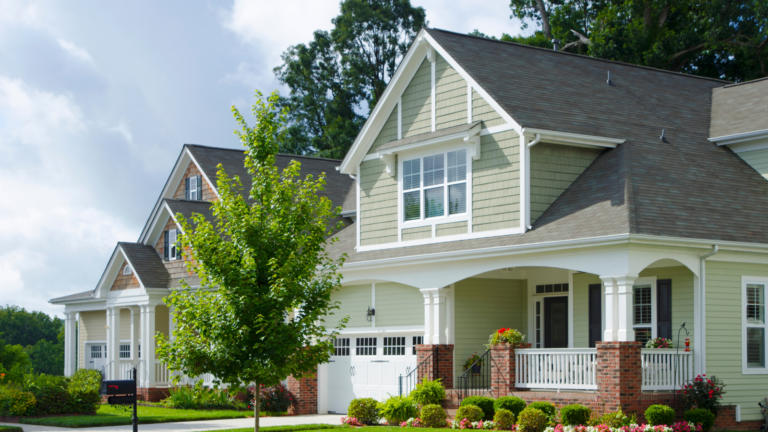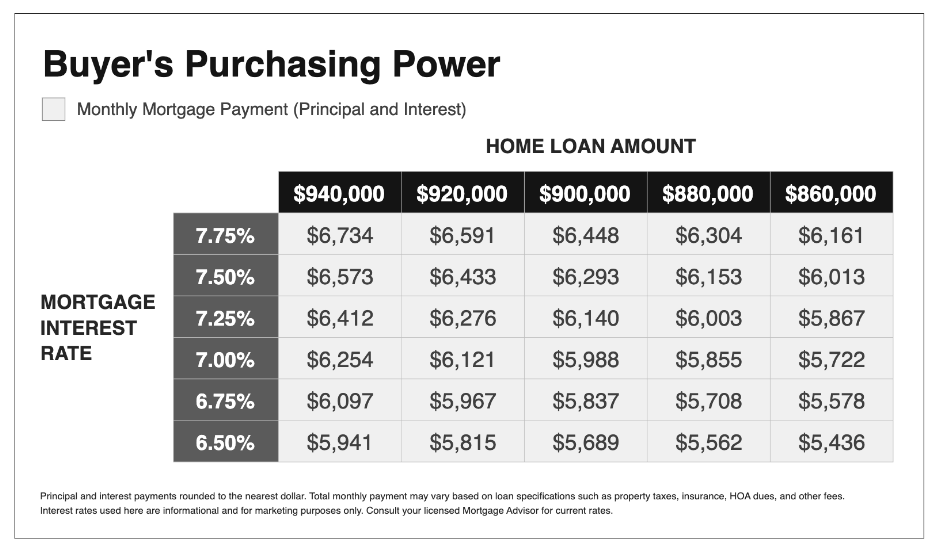
High mortgage rates—currently over 6.42% for a 30-year fixed rate mortgage—paired with hefty listing prices are quickly making buying a new home unaffordable for many. While high prices and high mortgage rates affect all potential homebuyers, those entering the market for the first time are finding the situation especially difficult. Stagnant wage growth coupled with inflation has increased the cost of living, so many are finding it difficult to save for a down payment and afford an expensive monthly housing bill. Being priced out of home ownership prevents people from building the kind of financial security that comes with owning a home.
But don’t worry. You can still buy.
When prices are high, competition is low. If you can make the finances work, you have a better chance of nabbing the home you want without competing offers from other buyers. Another benefit? Lower competition means homes are staying on the market longer. When that happens, home sellers are more willing to negotiate contract terms—and even their asking prices.
Ready to make your homeownership dream a reality? Here’s how:
1. Propose a rate buy-down
When we look at homeownership costs, we’re calculating the monthly payment. With the dramatic increase interest rates, homeownership has been pushed out of reach for more people. But we create new opportunities as markets change. Some are old, some are new. Buy-downs have made homeownership possible for many buyers. It could be an option for you.
The structure of buy-downs has changed but they’re not a new real estate tool.
A mortgage rate buy-down is an option available from a lender to reduce the borrower’s interest rate. The most common way to get a mortgage rate buy-down is through points. One point is 1% of the interest rate. Points are fees that you pay upfront when taking out your loan. You do that in exchange for a lower interest rate over time.
Said more simply, a buy-down is a tool used to reduce your mortgage interest rate. Remember, rates are based on risk. The higher the risk is for the bank, the higher the interest rate for the buyer. A similar option is known as “paying points.”
Looking at the numbers
An example: For a mortgage of $860,000 where the buyer is offered a 7.5% interest rate, paying $8,600 would lower the interest rate to 6.5%. Paying points just took the mortgage from $6,013 a month to $5,436 a month. A reduction of $577 per month.
Even though you’ll be paying more upfront, the overall amount spent over the life of the loan will be less because you’ve locked in a lower interest rate. Discuss this option with your mortgage specialist before starting the pre-approval process. It could mean the difference between buying a home and not buying one.
The biggest difference in buy-downs these days is that payment of that fee may be a part of the negotiations. The seller may be willing to pay the buyer’s buy-down.
2. Put off major renovations and DIY what you can
If you had plans to roll your remodel costs into your mortgage, you might want to consider seeing where you can save money by either putting those repairs off or doing minor updates on your own. Are major renovations something you really need to do right away in your new home? I don’t know of any homebuyer who wants to put their renovations off. Most want to get major work done before they move in.
That’s just not always financially possible. If you can withhold immediate gratification you may be able to get more house than you initially anticipated. Or get a house, period.
If you delay upgrades for a few years, you can build equity. That will allow you to pay for those updates with a home equity loan or line of credit. Or better yet: Put on your tool belt. Get involved in the renovations and save money on the project!
Learning about home maintenance has many benefits! Getting confident about your own ability to make repairs might empower you to consider offering on a lower-priced home that needs a few updates you can do yourself! You might be amazed what new paint and flooring can do.
3. Revisit your must-have list (for a lower sticker price)
Do you really need all four bedrooms or a home in a specific neighborhood? Could a less-updated or aesthetically pleasing home be something you’d consider? Opting to shop for a smaller house or one that meets your essential needs instead of one that has everything on your wish list could allow you to find a property that works for you at a more affordable price. By being open-minded about what you deem as “must-haves,” you will have more options to choose from, which increases your chances of finding something that’s available at a lower cost.
This is another instant gratification conversation. Create your must-have list, just don’t be married to it. Be flexible. Focus on the location. Buy that first. In fact, buy the best location you can afford. The house can become secondary with this approach. You can always renovate the house. But you can’t move it to a better location.
4. Increase your downpayment for a lower monthly payment
There are a few creative ways to increase your available cash so you can afford a larger downpayment. Here are some top options:
Hold off on buying to save up
This is not a good approach In a rapidly escalating market. You might put yourself in a situation where homes are increasing in price faster than you can save. However, that’s not where we are now. Saving more might be to your benefit.
To increase the amount you have available for a downpayment, consider putting off the purchase of a home until you are able to save up more money. You will need to determine your savings goal and make sure it’s realistic for your financial situation.
Some tips for saving money:
- Buy groceries in bulk to reduce the impact of inflation on your budget. A FoodSaver can be a great money saver. Check out a Grocery Outlet nearby. You can buy in bulk without buying the extra large packages you get at Costco.
- Find ways to spend less on gas by driving less, doing errands on bike or on foot. Combing multiple trips into one drive from one end of the destination to the other can also be helpful.
- Reduce expenditures on non-necessary purchases like eating out or updating your wardrobe. Put yourself on the “Food and Gas Budget. ” Basically, just buy the absolute necessities. What is necessary can change over time if you use a spending tracking system. You can use something simple like a notepad and pen; the notes app in your phone, or an online system.
- A side hustle is also a great way to build up your savings. There are hundreds of side-hustle ideas. Driving for a ride-share company, housesitting, or dog-walking are all sources of part-time income that don’t require special training.
First-time home buyer assistance (if it applies)
If you qualify as a first-time homebuyer, there are potential financial assistance programs available from state and federal governments that could help increase your downpayment funds and result in lowered monthly payments. These programs vary by location, so ask your real estate agent and research what’s available in the area you plan on living.
First-time buyer may not mean exactly what it says. Some programs define a first-time buyer as someone who hasn’t owned a home in three or five years. So don’t rule yourself out before checking into it.
Gift money
Do you know anyone who might contribute a gift to your downpayment fund? If so, gift money is a great way to increase your downpayment. It does require careful consideration and planning since gifts from other people must meet certain criteria before being accepted as part of an official loan application process. You’ll need documentation proving the funds’ source and that it’s actually a gift (as opposed to a loan), as well as proof of your own income.
It’s best practice to consult with an experienced mortgage specialist prior to accepting such offers so that all rules governing these types of transactions are followed.
5. Buy now and refinance later (if you can)
Buying a home while mortgage rates are high and then refinancing later when mortgage rates drop is a smart move because it locks in the current rate. By doing this, you can avoid paying higher interest if interest rates go even higher, and you still get the benefit of the lower rate after you refinance. Additionally, by locking in the current rate, you have more time to build equity in your home before refinancing.
Opting to buy now also helps you take advantage of the reduced competition. If you wait until mortgage rates drop, you’ll be competing with other buyers which might mean you’ll end up contending with competing offers and potentially higher prices.
6. Look at different loan options
A 30-year fixed mortgage is the most expensive because of the security it provides over such a long period of time. It’s also the most well known. But you can consider other mortgage types, especially if you’re not going to own your home for 30 years. You don’t have to pay for something you’re not going to use in the form of the costs of a 30-year mortgage. A loan that with an initial fixed rate and then goes adjustable might be a good option for your situation. There are a lot of loan programs available